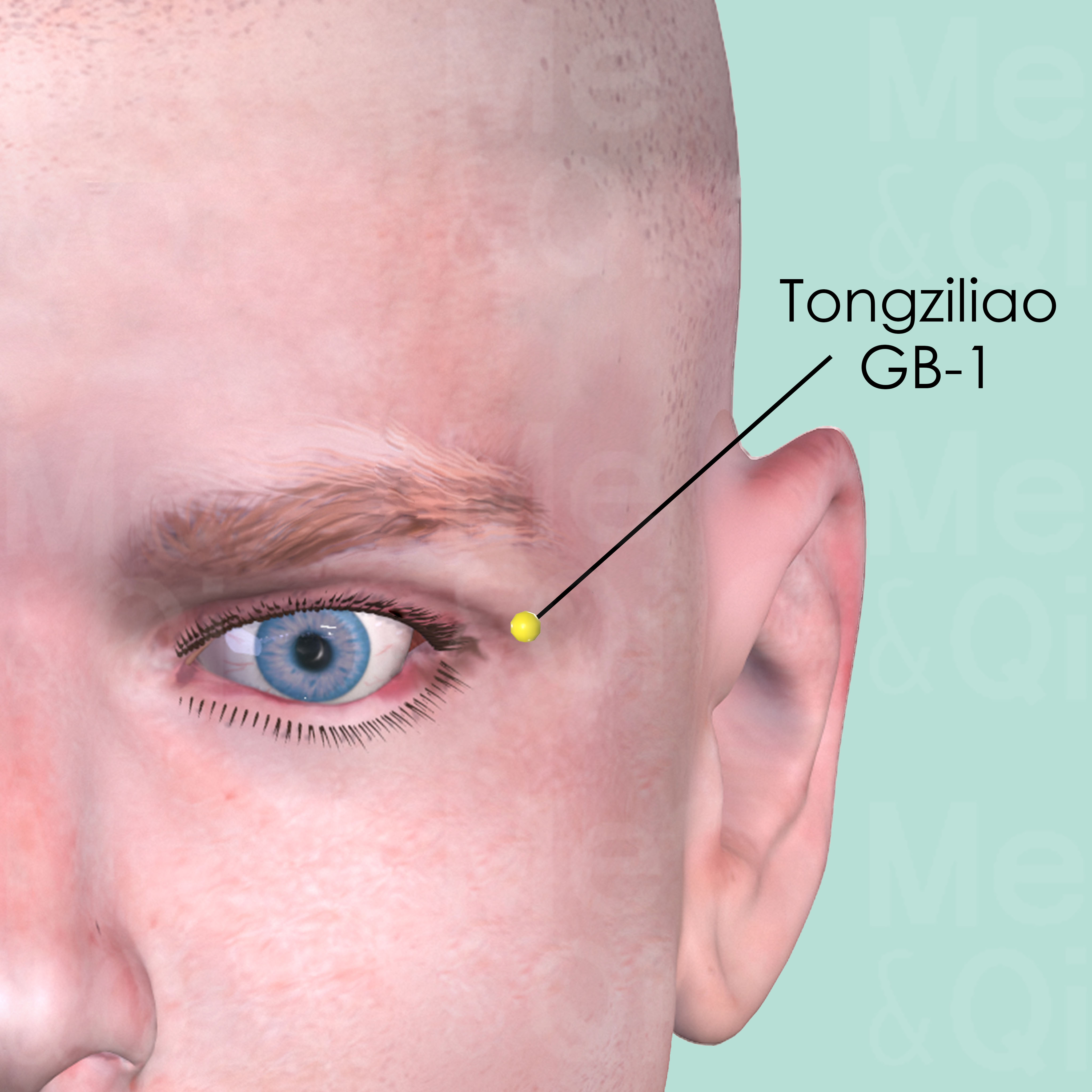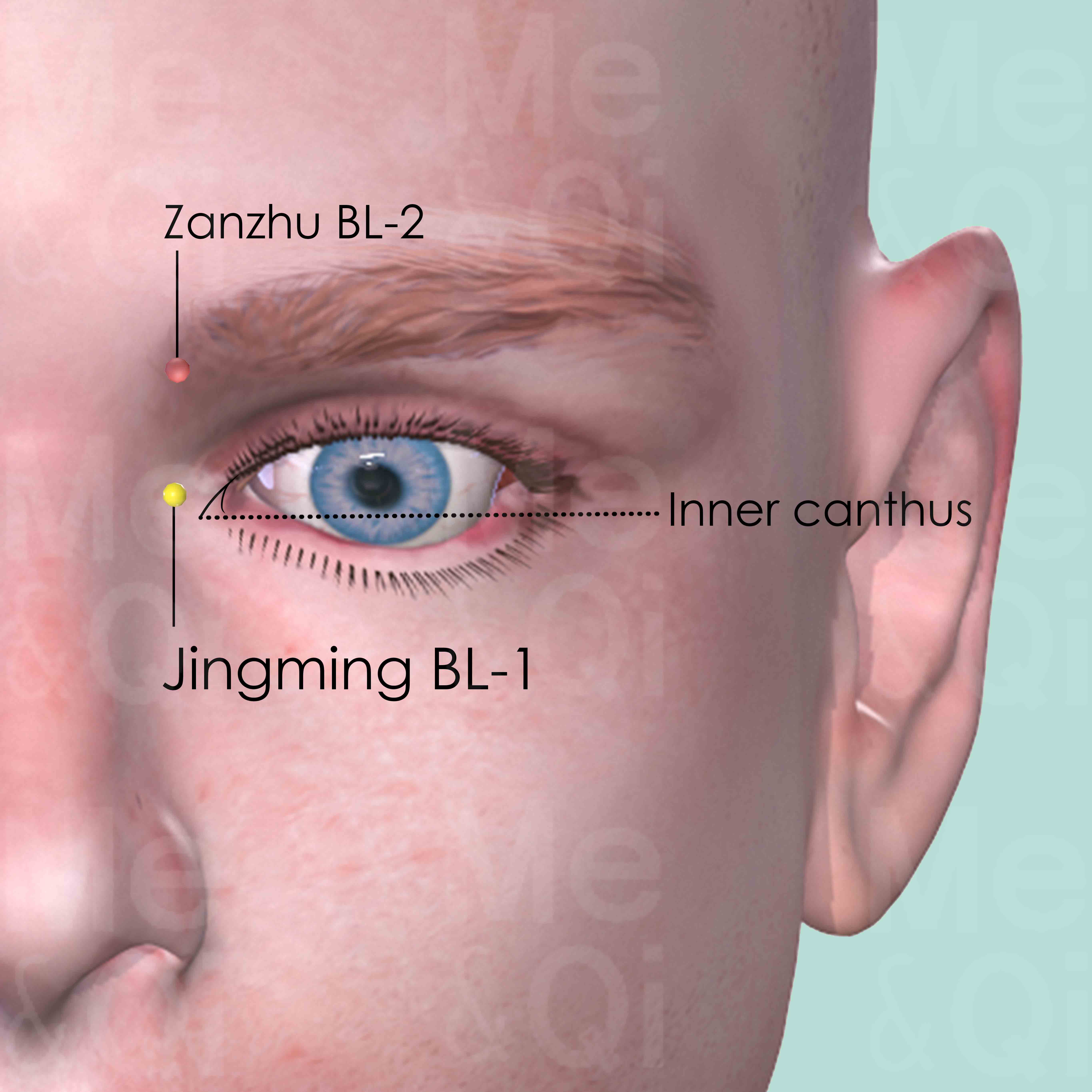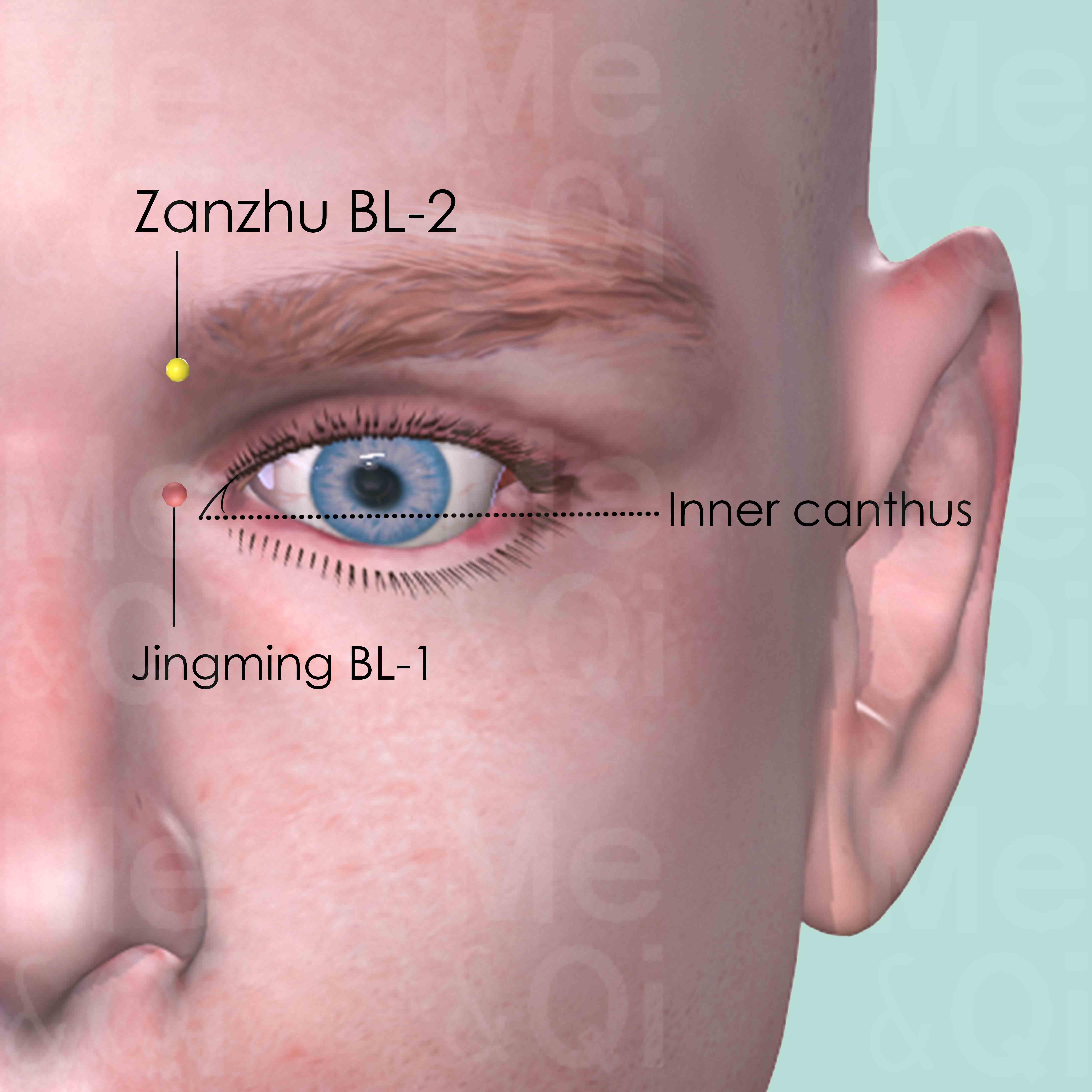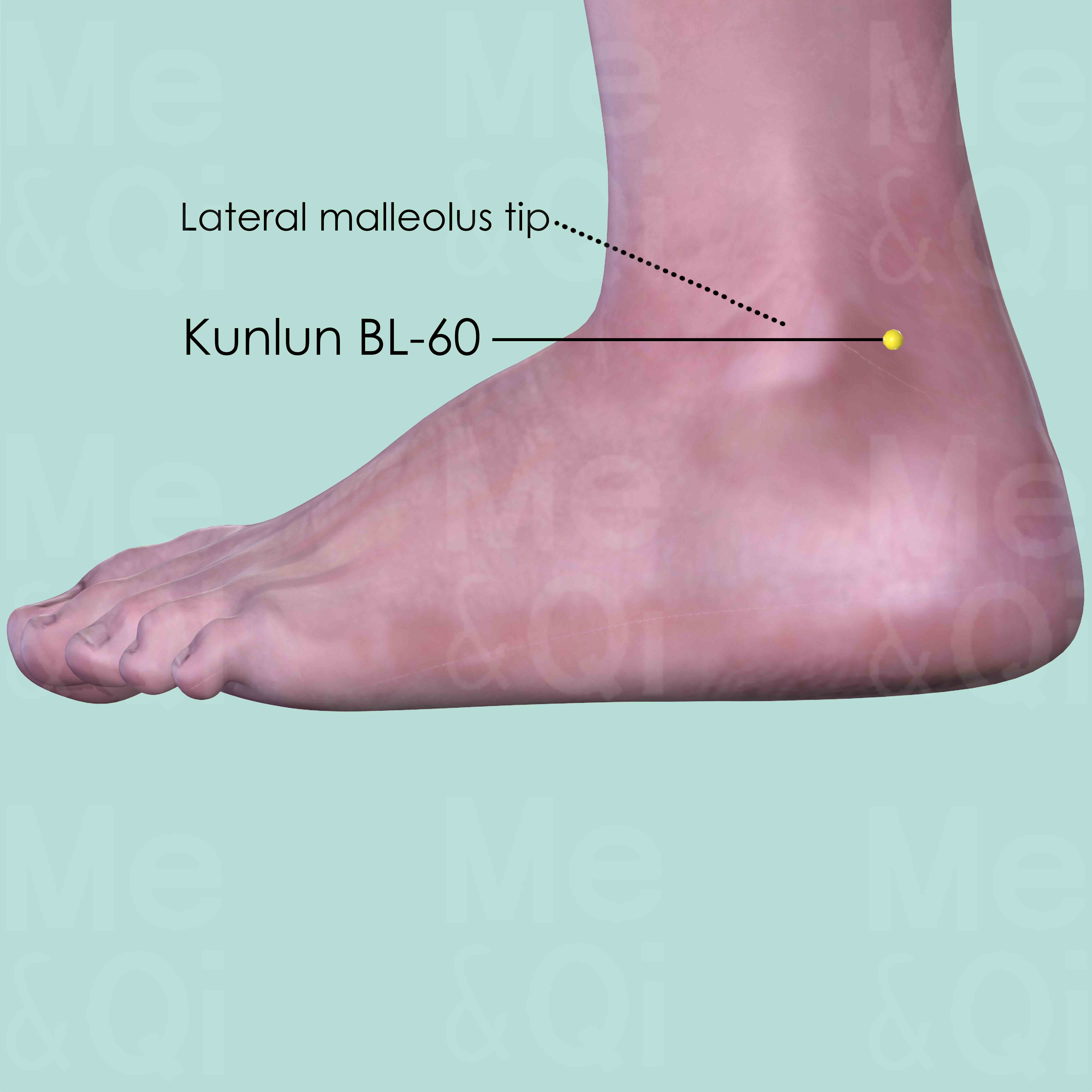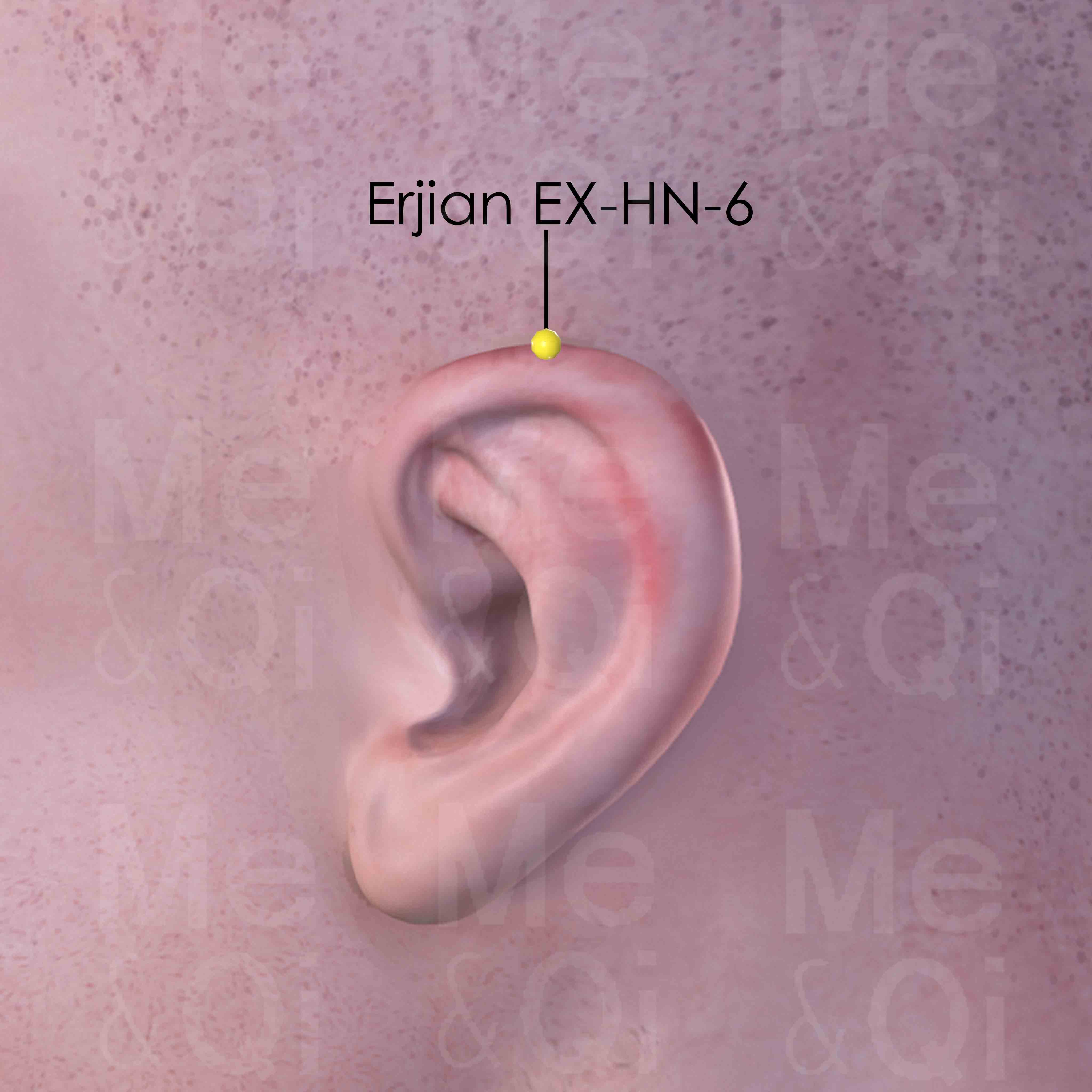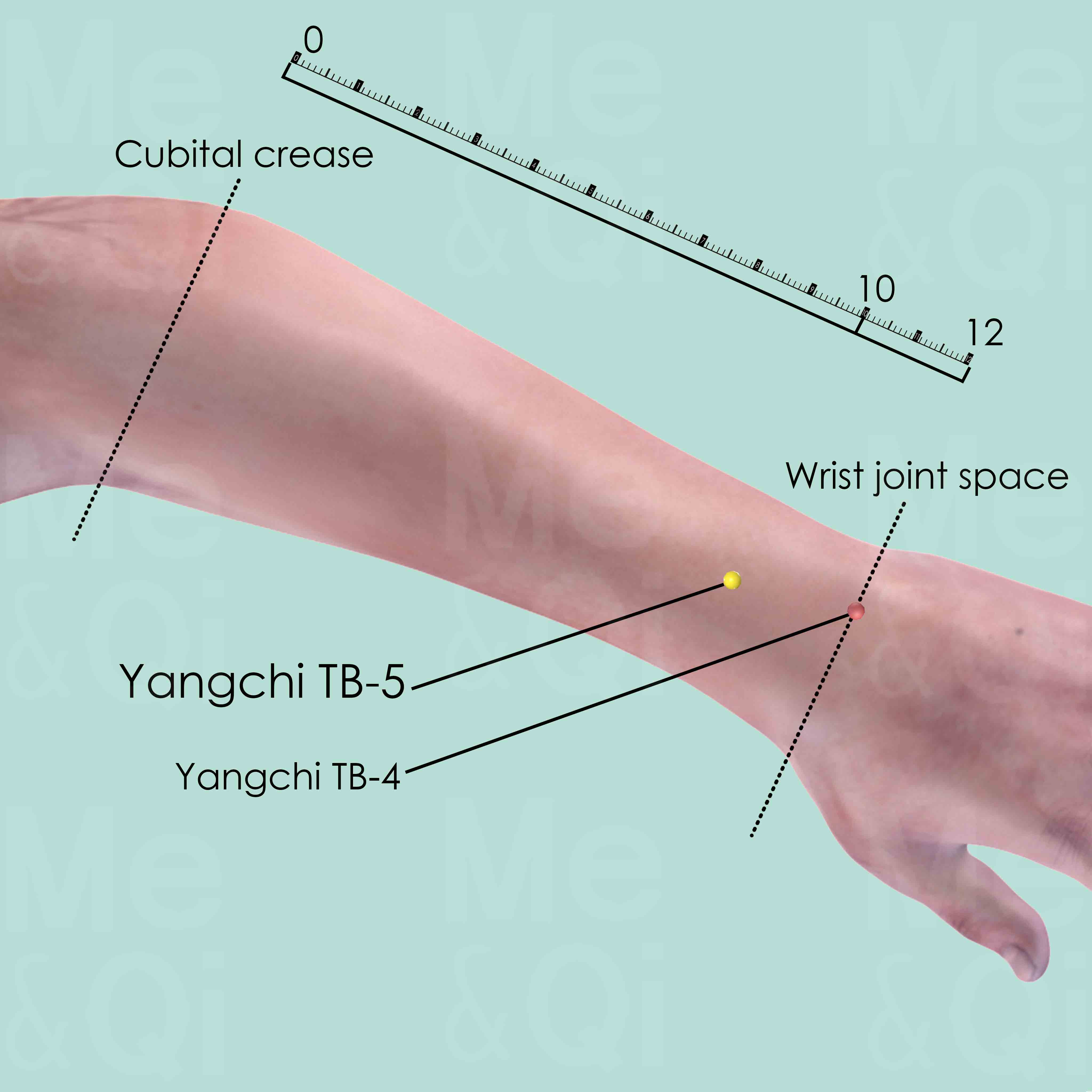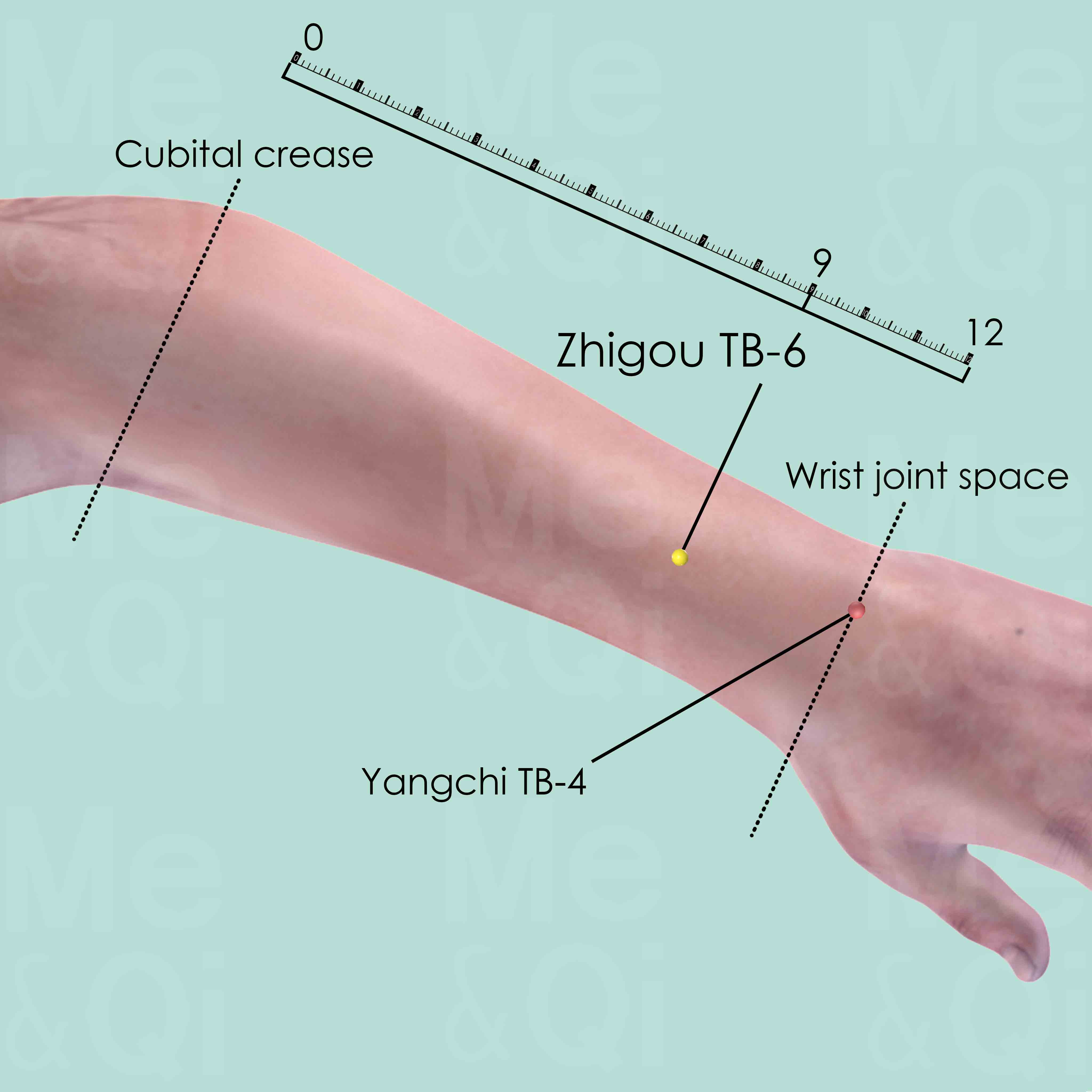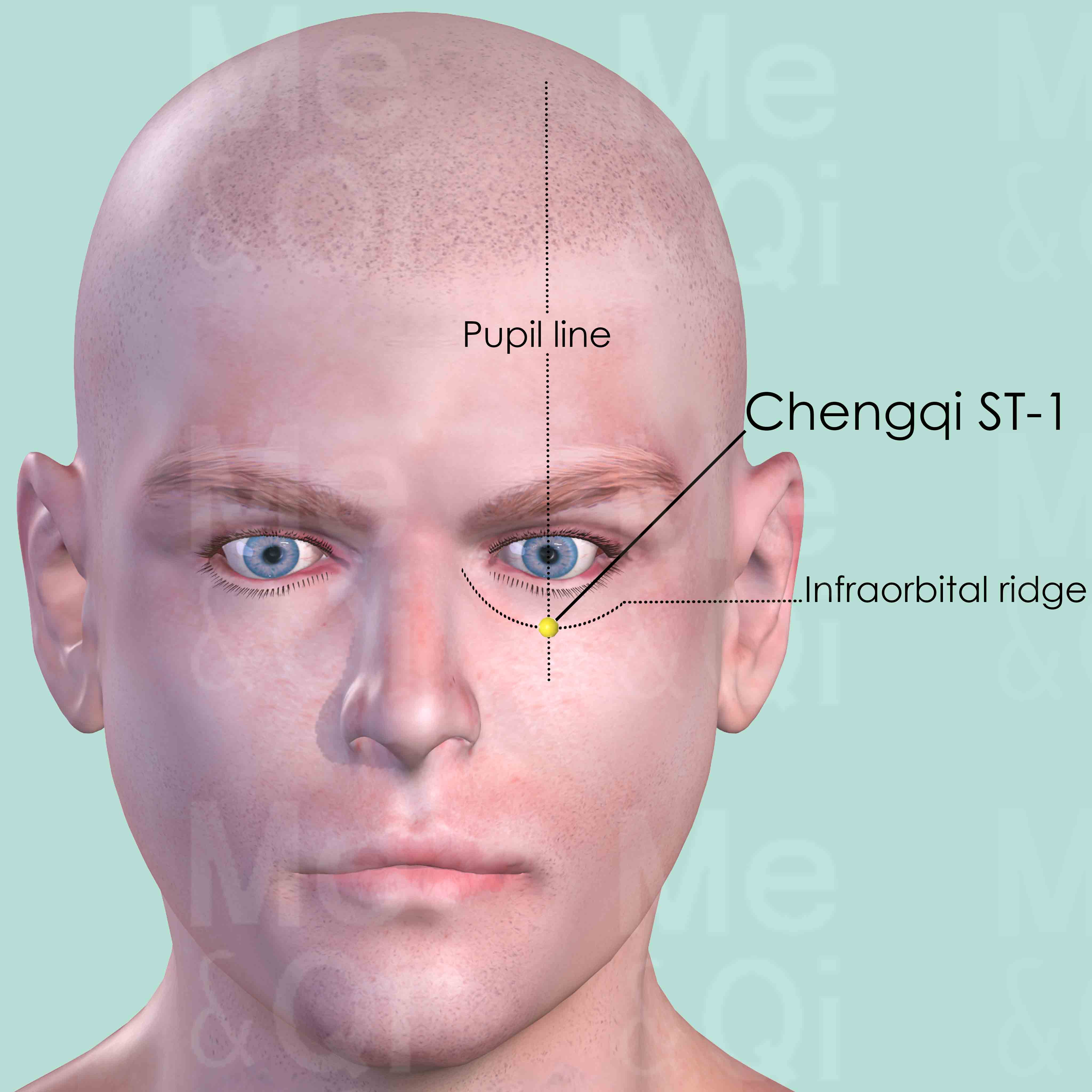Ocular Swellingaccording to TCM
Symptom family: Eye Disorders and Symptoms
Did you mean? Painful Eyes
What is Ocular Swelling?
Ocular swelling refers to the inflammation and swelling of the tissues around the eyes, including the eyelids and the area under the eyes. This condition can be caused by various factors such as allergies, infections, injury, or underlying health issues.
Symptoms can include puffiness, redness, itching, and sometimes pain or discomfort. Ocular swelling can affect one's appearance and vision, and its underlying cause often determines the approach to treatment.
How does TCM view Ocular Swelling?
Traditional Chinese Medicine (TCM) approaches ocular swelling differently than Western medicine. In TCM, such symptoms are considered manifestations of imbalances in the body’s Qi (energy), Blood, and Body Fluids.
TCM practitioners look at ocular swelling as a sign of underlying disharmonies within the body, particularly related to organs like the Liver and Kidneys. Identifying and treating these disharmonies is crucial in TCM, as it aims to restore the overall balance and health of the body.
Root Causes of Ocular Swelling in TCM
TCM recognizes several patterns that can lead to ocular swelling. One common cause is the presence of Dampness in the body, which can manifest as edema or swelling in various parts, including around the eyes. This might be associated with systemic symptoms such as abdominal distention or leg edema.
Another pattern involves Wind-Cold-Water invading the Lungs, which can cause ocular swelling accompanied by respiratory symptoms like coughing and shortness of breath. Understanding these patterns helps in developing a TCM-based treatment strategy that addresses both the symptoms and their root causes.
Explore below more details about what might cause Ocular swelling according to TCM.
Dampness
"Dampness" in TCM is a concept that describes a pattern of disharmony where the body accumulates excess moisture. Imagine the heavy, sticky feeling you get on a very humid day; that's similar to what dampness feels like internally. It can manifest as a sense of heaviness, bloating, sluggishness, or even a foggy mind. This condition is often thought to arise from environmental factors like living in a damp place, dietary habits that promote moisture in the body, or internal imbalances that hinder the body's ability to process fluids properly. In TCM, dampness can obstruct the normal flow of energy and fluids in the body, leading to various symptoms.... see more
Dampness Patterns That Can Lead to Ocular Swelling
Common Symptoms: Facial Edema Shortness Of Breath Abdominal Edema Ankle Edema Foot Edema Oedema Of Hands Leg Edema Abdominal Distention
| Pattern Name | Relevant Symptoms | Relevant Formulas |
|---|---|---|
| Oedema | Eye swelling, Abdominal edema, Ankle edema, Facial edema, Foot edema, Oedema of hands, Leg edema, Ocular swelling, Abdominal distention... see more | Wu Ling San | Fang Ji Huang Qi Tang | Ping Wei San | Wu Pi Yin | Ling Gui Zhu Gan Tang | Zhen Wu Tang | Shen Qi Wan | Yu Gong San | Zhou Che Wan |
| Wind-Cold-Water invading the Lungs | Eye swelling, Ocular swelling, Shiny complexion, Scanty clear urination, Fever, Coughing, Shortness of breath, Aversion to cold, Facial edema... see more | Xiao Qing Long Tang |
Phlegm
In TCM "Phlegm" as a pattern of disharmony is a complex concept that extends beyond the physical manifestation of mucus. It represents a pathological factor that can disrupt the flow of Qi (vital energy) and blood, leading to various health issues. Phlegm in TCM is seen as a sticky, turbid substance arising from the body's inability to metabolize fluids properly, often due to a dysfunction of the spleen. It's not only associated with respiratory problems like cough and congestion but also with systemic issues. Symptoms can include a feeling of heaviness, mental cloudiness, dizziness, and in some cases, the formation of lumps or masses. Phlegm can even be "invisible," contributing to emotional disturbances like depression or stress. ... see more
Phlegm Patterns That Can Lead to Ocular Swelling
| Pattern Name | Relevant Symptoms | Relevant Formulas |
|---|---|---|
| Oedema | Eye swelling, Abdominal edema, Ankle edema, Facial edema, Foot edema, Oedema of hands, Leg edema, Ocular swelling, Abdominal distention... see more | Wu Ling San | Fang Ji Huang Qi Tang | Ping Wei San | Wu Pi Yin | Ling Gui Zhu Gan Tang | Zhen Wu Tang | Shen Qi Wan | Yu Gong San | Zhou Che Wan |
Wind
In TCM "Wind" is a concept that represents a pattern of disharmony, often characterized by its sudden and unpredictable nature, much like a gusty wind changing direction without warning. This pattern is associated with symptoms that come and go quickly or move around the body, such as itching, tremors, or even certain types of pain. Wind is considered to be a primary cause of illnesses that have these rapidly changing characteristics. In TCM, external Wind often refers to illnesses that start suddenly, like the common cold, believed to be caused by external pathogenic factors like climatic changes. On the other hand, internal Wind can be linked to internal imbalances and can manifest in conditions like dizziness or spasms. ... see more
Wind Patterns That Can Lead to Ocular Swelling
| Pattern Name | Relevant Symptoms | Relevant Formulas |
|---|---|---|
| Wind-Cold-Water invading the Lungs | Eye swelling, Ocular swelling, Shiny complexion, Scanty clear urination, Fever, Coughing, Shortness of breath, Aversion to cold, Facial edema... see more | Xiao Qing Long Tang |
Cold
In TCM "Cold" as a pattern of disharmony refers to a specific type of imbalance within the body's systems, often linked to a deficiency or weakness. It's not about feeling physically cold or having a common cold, but rather a metaphorical description of certain symptoms and underlying conditions. When a TCM practitioner says someone suffers from "Cold," it usually implies that the body's Yang energy, which is warm and active, is insufficient or overpowered by Yin energy, which is cool and passive. Symptoms of Cold in TCM can include a general feeling of coldness, cold limbs, pale complexion, low energy, slow metabolism, and a preference for warmth. ... see more
Cold Patterns That Can Lead to Ocular Swelling
| Pattern Name | Relevant Symptoms | Relevant Formulas |
|---|---|---|
| Wind-Cold-Water invading the Lungs | Eye swelling, Ocular swelling, Shiny complexion, Scanty clear urination, Fever, Coughing, Shortness of breath, Aversion to cold, Facial edema... see more | Xiao Qing Long Tang |
Lung
In TCM the Lungs are seen as the organ responsible for controlling Qi and respiration, as well as being a key part of the body's defensive system. They are thought to maintain the balance and flow of air and moisture, and are closely linked to the skin and hair. When the Lungs are imbalanced or malfunctioning in TCM, it can lead to respiratory issues like coughing or asthma, a weakened immune system, dry skin, and emotional disturbances such as sadness or grief. These symptoms are believed to arise from disruptions in the Lungs' ability to regulate Qi and protect the body, highlighting their central role in maintaining overall health and well-being.... see more
Lung Patterns That Can Lead to Ocular Swelling
| Pattern Name | Relevant Symptoms | Relevant Formulas |
|---|---|---|
| Wind-Cold-Water invading the Lungs | Eye swelling, Ocular swelling, Shiny complexion, Scanty clear urination, Fever, Coughing, Shortness of breath, Aversion to cold, Facial edema... see more | Xiao Qing Long Tang |
TCM Herbal Formulas for Ocular Swelling
In treating ocular swelling, TCM utilizes specific formulas based on the identified patterns of imbalance. For conditions related to Dampness, formulas like Wu Ling San, containing herbs such as Water plantain (Ze Xie), help promote urination and leach out Dampness.
For Wind-Cold-Water patterns, formulas like Xiao Qing Long Tang with Ephedra (Ma Huang) are used to clear Wind-Cold and resolve fluid accumulation. These treatments underscore TCM’s approach of targeting the underlying disharmonies to alleviate symptoms effectively.
Explore below some TCM herbal formulas used to address ocular swelling, organized by cause and by formula type.
- By Cause
- By Formula Type
- Dampness
- Phlegm
- Wind
- Cold
- View More Causes
- Formulas that promote urination and leach out dampness
- Formulas that warm and transform water and dampness
- Formulas that drive out excess water
- Formulas that transform dampness and harmonize stomach
- Formulas that warm yang and tonify
- Formulas that clear wind-Cold
Top Formula for Dampness:
Wu Ling San
Suitable for Dampness patterns that may cause ocular swelling, such as Oedema
Learn moreAll Formulas Recommended for Ocular Swelling Caused by Dampness
| Formula | Patterns Suitable For |
|---|---|
| Wu Ling San | Oedema |
| Fang Ji Huang Qi Tang | Oedema |
| Ping Wei San | Oedema |
| Wu Pi Yin | Oedema |
| Ling Gui Zhu Gan Tang | Oedema |
| Zhen Wu Tang | Oedema |
| Shen Qi Wan | Oedema |
| Yu Gong San | Oedema |
| Zhou Che Wan | Oedema |
| Xiao Qing Long Tang | Wind-Cold-Water invading the Lungs |
Top Formula for Phlegm:
Wu Ling San
Suitable for Phlegm patterns that may cause ocular swelling, such as Oedema
Learn moreAll Formulas Recommended for Ocular Swelling Caused by Phlegm
| Formula | Patterns Suitable For |
|---|---|
| Wu Ling San | Oedema |
| Fang Ji Huang Qi Tang | Oedema |
| Ping Wei San | Oedema |
| Wu Pi Yin | Oedema |
| Ling Gui Zhu Gan Tang | Oedema |
| Zhen Wu Tang | Oedema |
| Shen Qi Wan | Oedema |
| Yu Gong San | Oedema |
| Zhou Che Wan | Oedema |
Top Formula for Wind:
Xiao Qing Long Tang
Suitable for Wind patterns that may cause ocular swelling, such as Wind-Cold-Water invading the Lungs
Learn moreTop Formula for Cold:
Xiao Qing Long Tang
Suitable for Cold patterns that may cause ocular swelling, such as Wind-Cold-Water invading the Lungs
Learn moreFormulas that promote urination and leach out Dampness
These formulas are suitable for some ocular swelling-causing patterns like Oedema.
One such formula is Wu Ling San, with water plantain as a key herb.
Other formulas of this category are listed in the table below.
All "formulas that promote urination and leach out dampness" recommended for ocular swelling
| Formula | Patterns Suitable For (if applicable) |
|---|---|
| Wu Ling San | Oedema |
| Fang Ji Huang Qi Tang | Oedema |
| Wu Pi Yin | Oedema |
Formulas that warm and transform water and Dampness
These formulas are suitable for some ocular swelling-causing patterns like Oedema.
One such formula is Ling Gui Zhu Gan Tang, with poria-cocos mushroom as a key herb.
Other formulas of this category are listed in the table below.
All "formulas that warm and transform water and dampness" recommended for ocular swelling
| Formula | Patterns Suitable For (if applicable) |
|---|---|
| Ling Gui Zhu Gan Tang | Oedema |
| Zhen Wu Tang | Oedema |
Formulas that drive out excess water
These formulas are suitable for some ocular swelling-causing patterns like Oedema.
One such formula is Yu Gong San, with morning glory seeds as a key herb.
Other formulas of this category are listed in the table below.
All "formulas that drive out excess water" recommended for ocular swelling
| Formula | Patterns Suitable For (if applicable) |
|---|---|
| Yu Gong San | Oedema |
| Zhou Che Wan | Oedema |
Formulas that transform Dampness and harmonize Stomach
These formulas are suitable for some ocular swelling-causing patterns like Oedema.
One such formula is Ping Wei San, with black atractylodes rhizome as a key herb.
Formulas that warm Yang and tonify
These formulas are suitable for some ocular swelling-causing patterns like Oedema.
One such formula is Shen Qi Wan, with prepared aconite as a key herb.
Formulas that clear Wind-Cold
These formulas are suitable for some ocular swelling-causing patterns like Wind-Cold-Water invading the Lungs.
One such formula is Xiao Qing Long Tang, with ephedra as a key herb.
Acupoints for Ocular Swelling
Acupuncture is a key component of TCM treatment, and specific acupoints are utilized for addressing ocular swelling. Points like Muchuang GB-16, Naokong GB-19, and Tongziliao GB-1 in the Gall Bladder Channel are targeted for their actions in benefiting the eyes and expelling Wind.
In the Large Intestine Channel, points like Hegu LI-4 and Wenliu LI-7 are chosen for their efficacy in clearing Heat and resolving Phlegm. Jingming BL-1 in the Bladder Channel is also used for its ability to expel Wind and clear Heat. These acupoints are selected based on their traditional functions and relevance to the patterns of disharmony associated with ocular swelling.
Explore below some acupoints used to address ocular swelling, organized by meridian.
- By Meridian
- Gall Bladder Channel
- Large Intestine Channel
- Bladder Channel
- Extra Points: Head and Neck (EX-HN)
- Triple Burner Channel
- Small Intestine Channel
- Stomach Channel
- Extra Points: Upper Extremities (EX-UE)
- Heart Channel
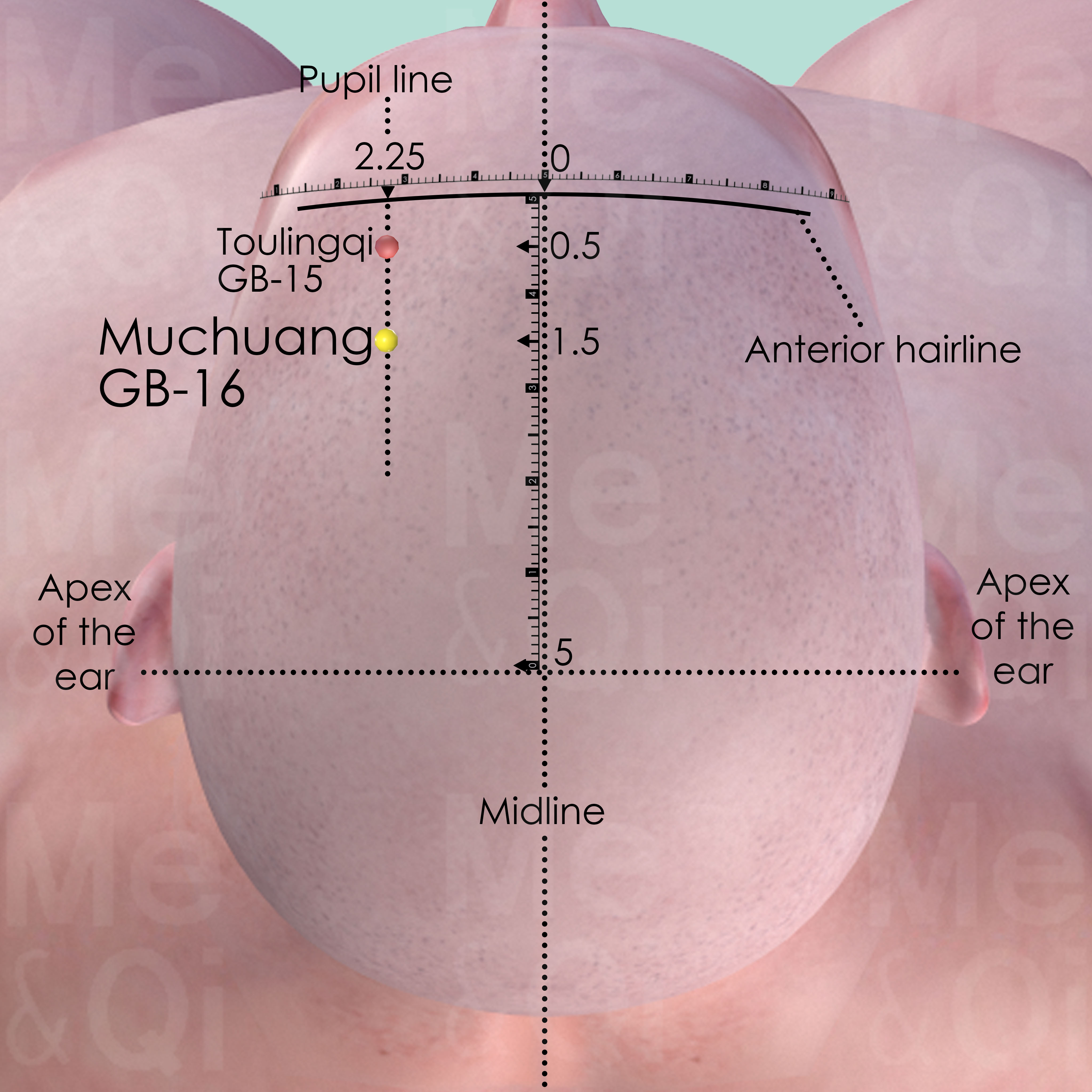
Muchuang GB-16
1 cun posterior to the Toulingqi GB-15 or 1.5 cun posterior to the anterior hairline, on the pupil line which is 2.25 cun lateral to the midline.
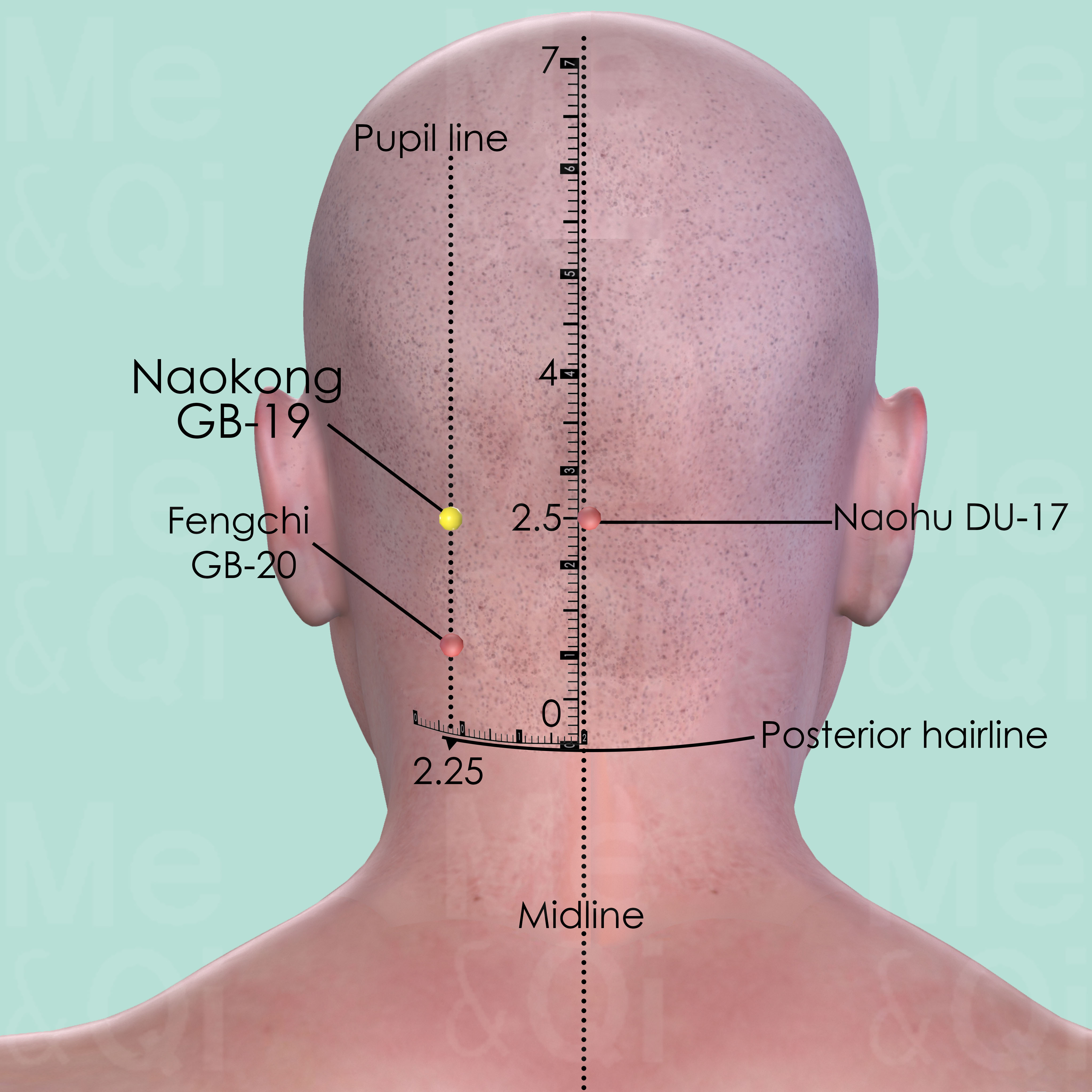
Naokong GB-19
Directly above Fengchi GB-20, level with Naohu DU-17, on the lateral side of the external occipital protuberance.
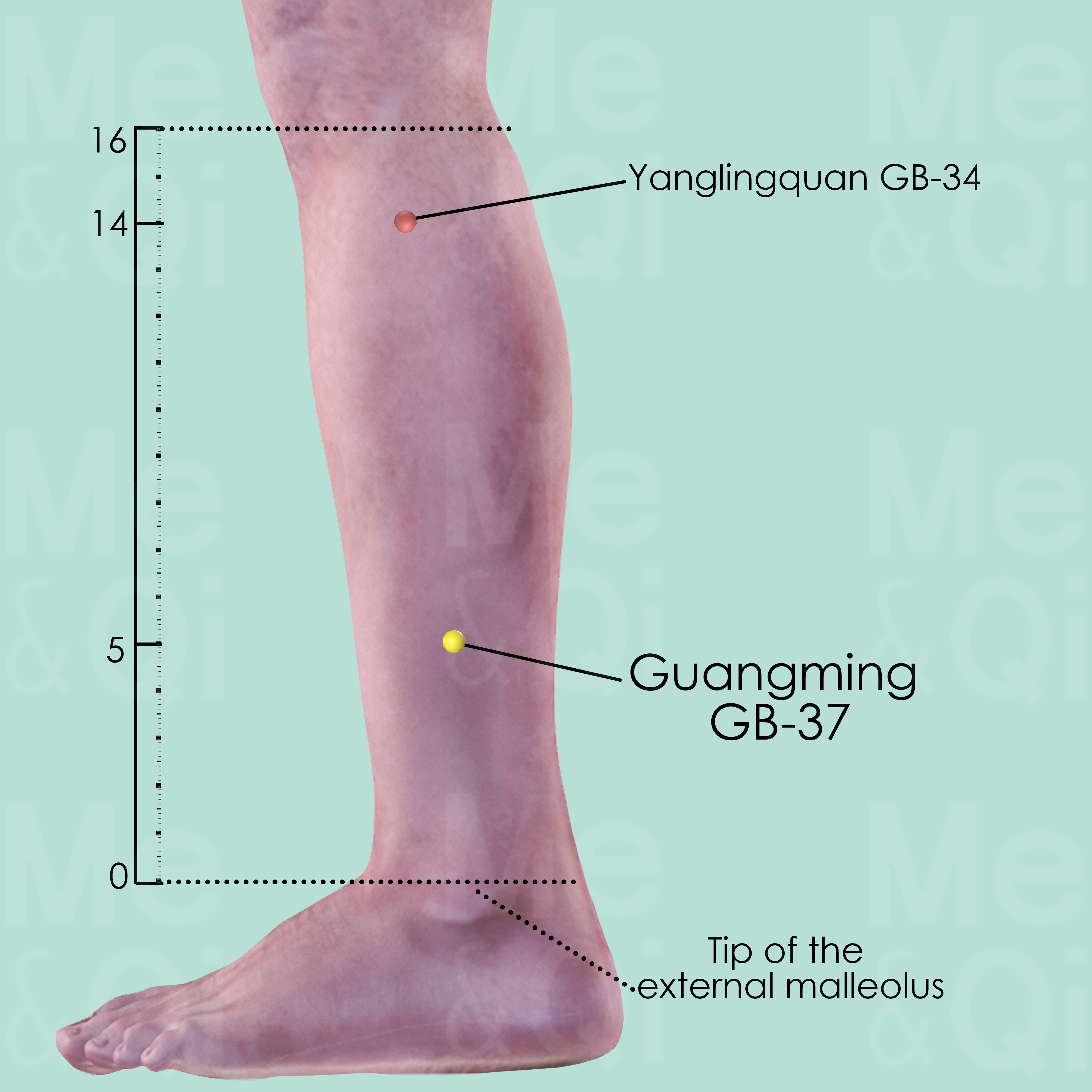
Guangming GB-37
5 cun directly above the tip of the external malleolus, on the anterior border of the fibula.
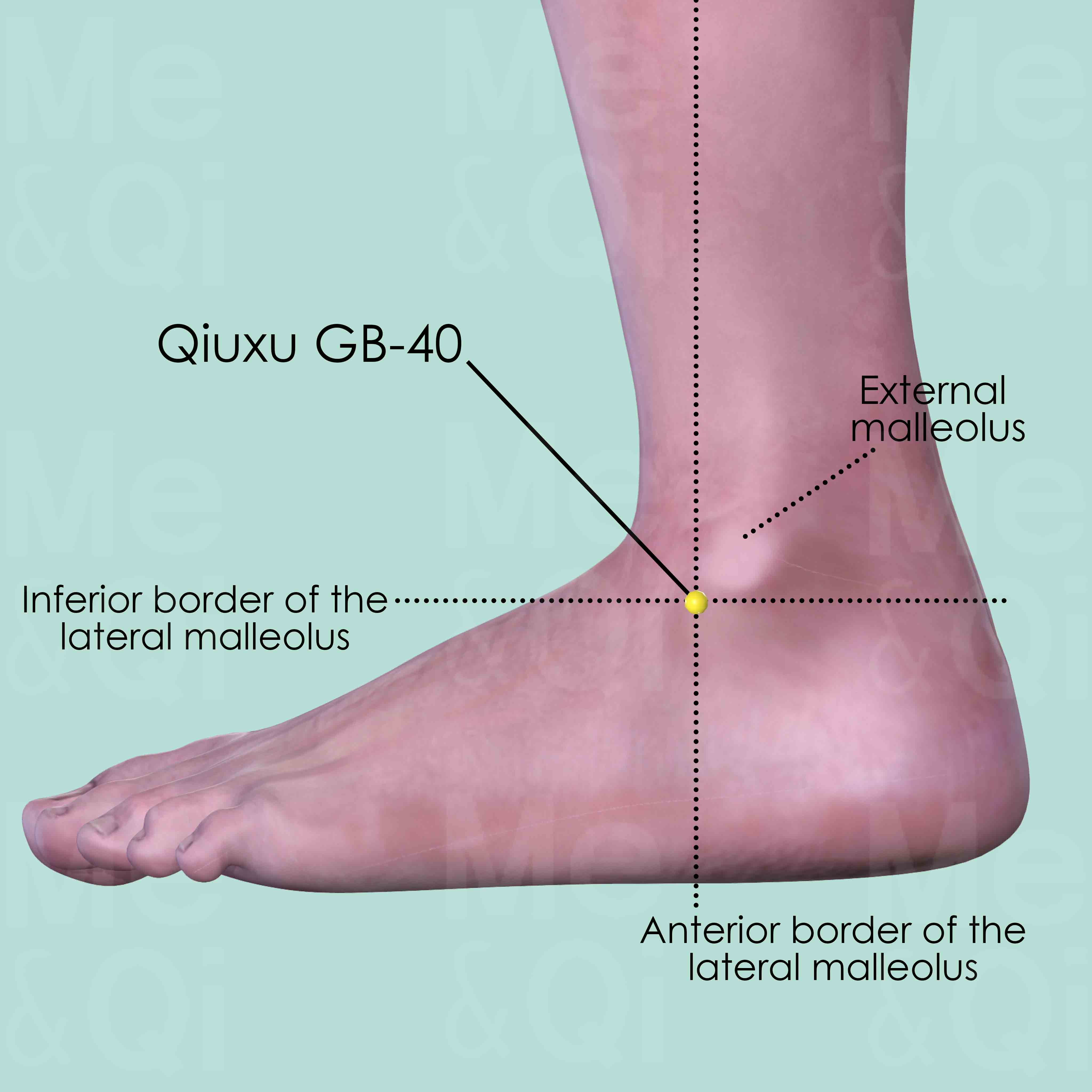
Qiuxu GB-40
Anterior and inferior to the external malleolus, in the depression on the lateral side of the tendon of extensor digitorum longus muscle that goes to the little toe.
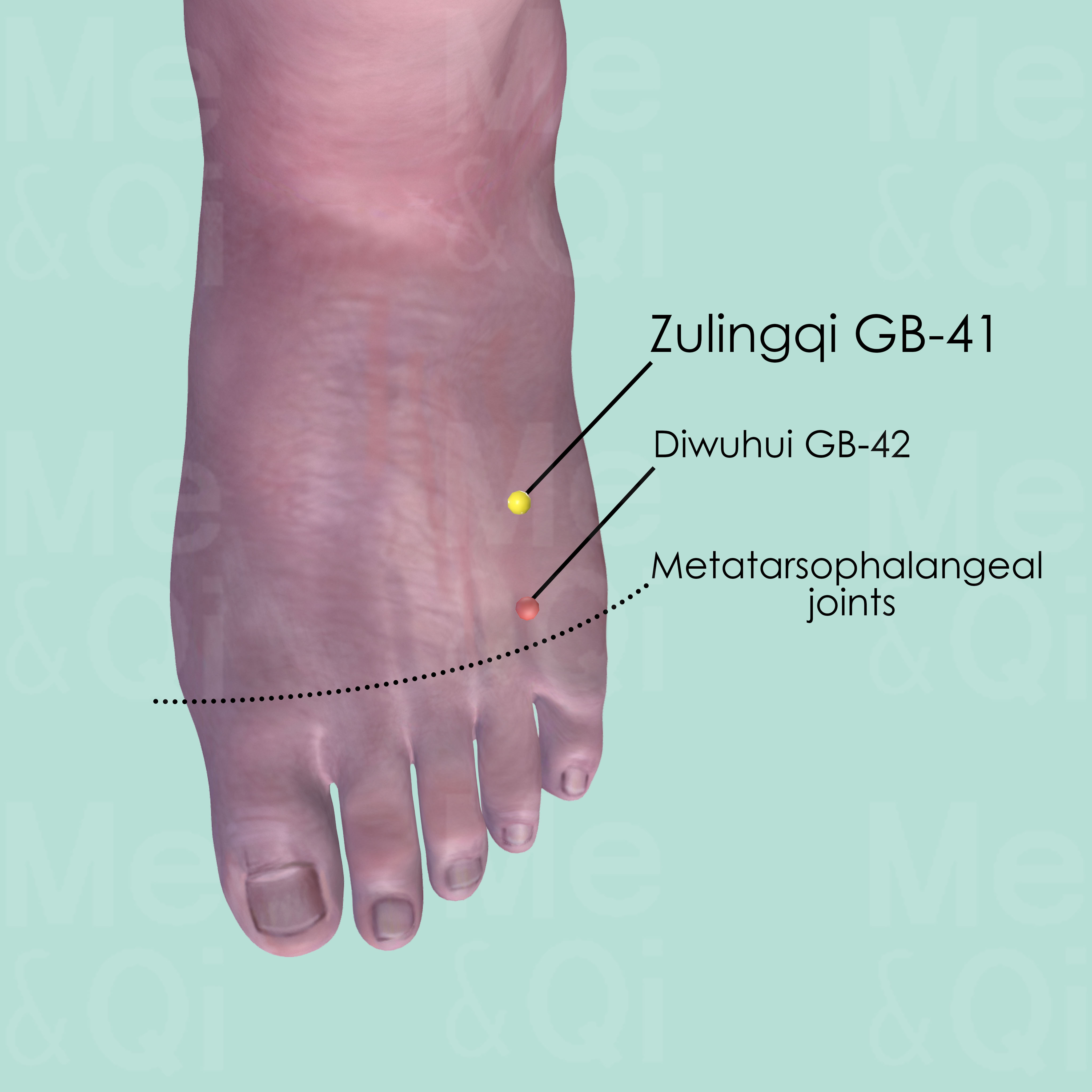
Zulingqi GB-41
In the depression distal to the junction of the 4th and 5th metatarsal bones, on the lateral side of the tendon of extensor digitorum longus muscle of the foot.
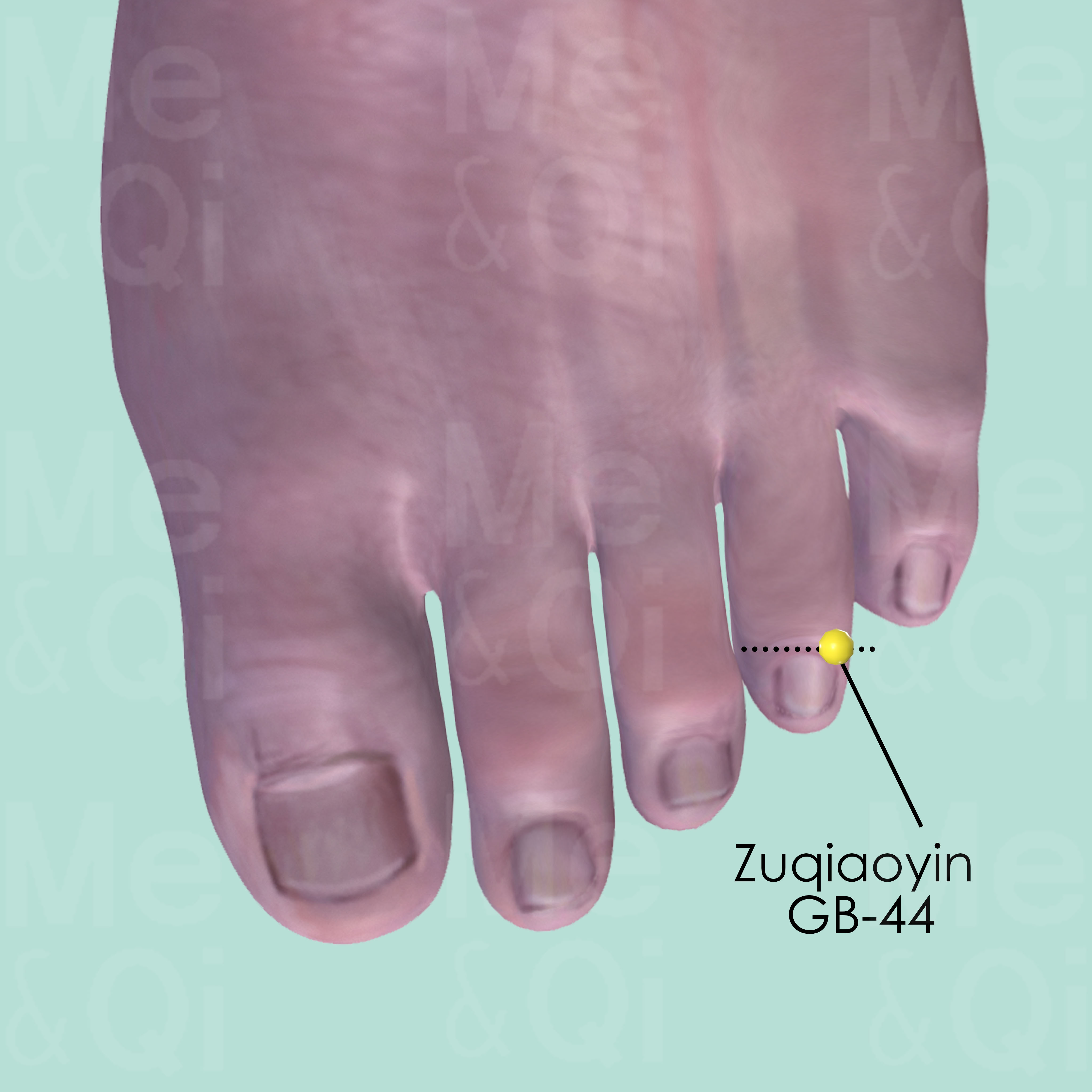
Zuqiaoyin GB-44
On the lateral side of the 4th toe, about 0.1 cun posterior to the corner of the nail.
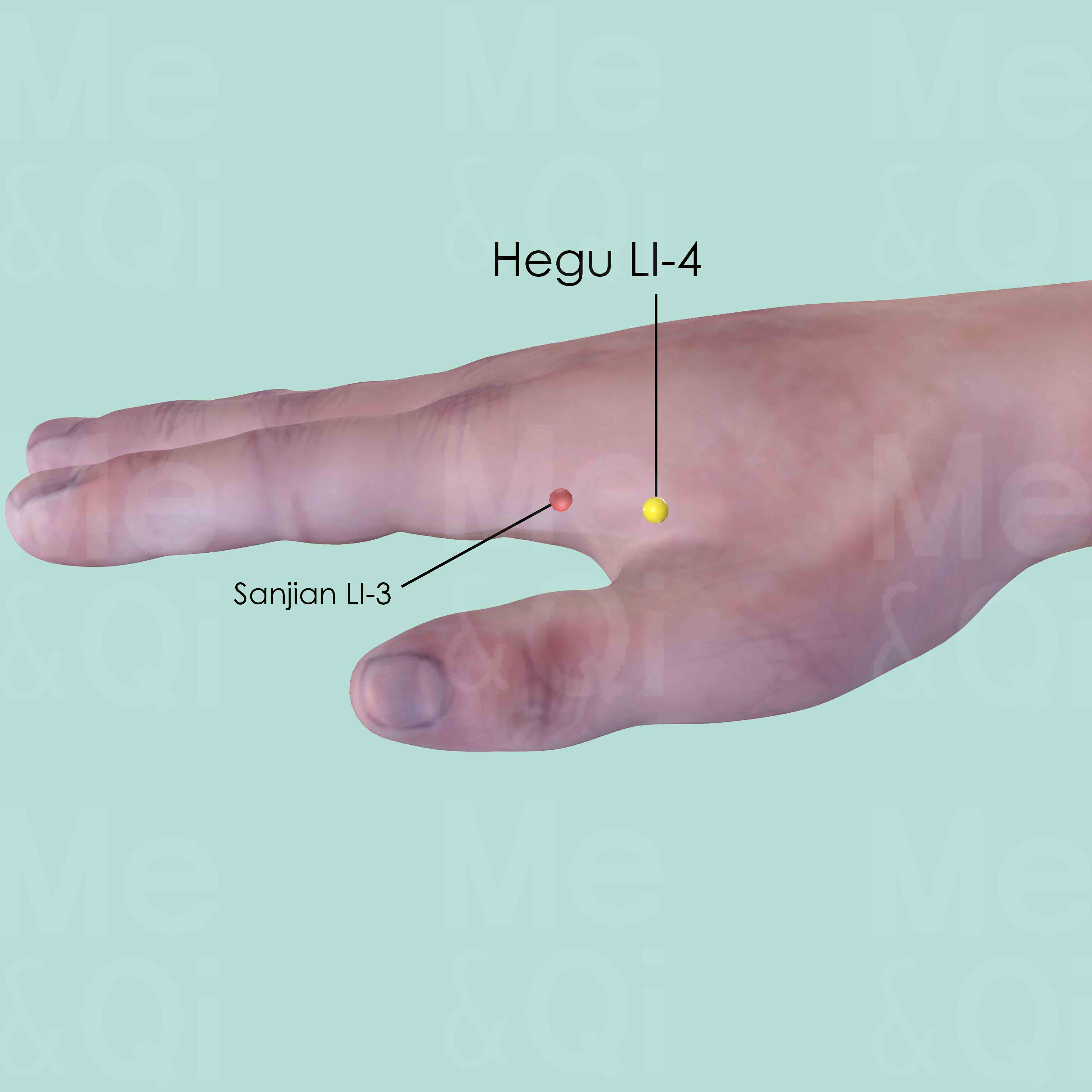
Hegu LI-4
Between the 1st and 2nd metacarpal bones, approximately in the middle of the 2nd metacarpal bone on the radial side.
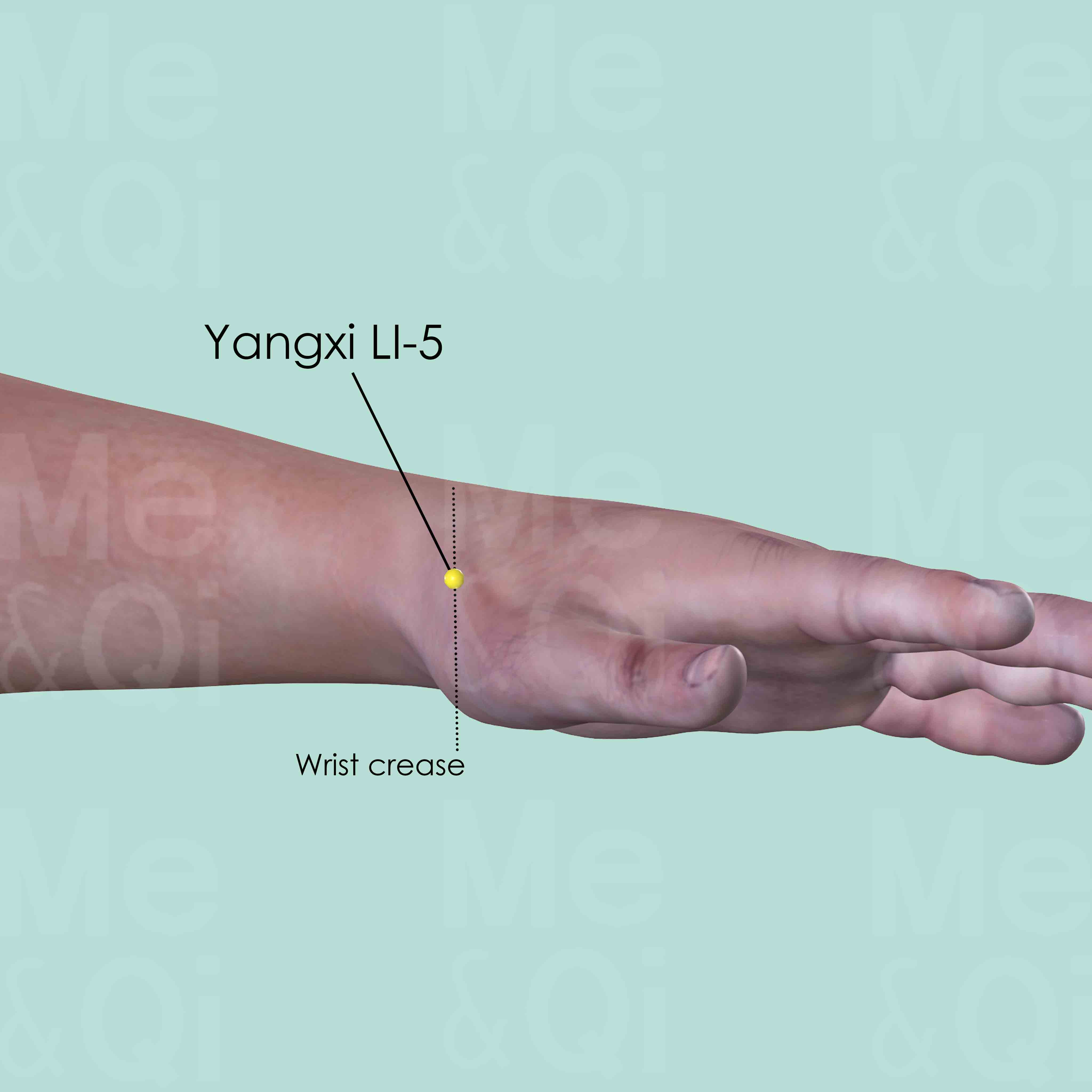
Yangxi LI-5
On the radial side of the wrist. When the thumb is tilted upward, it is in the depression on the wrist joint space (wrist crease) between the tendons of extensor pollicis longus and brevis muscles.
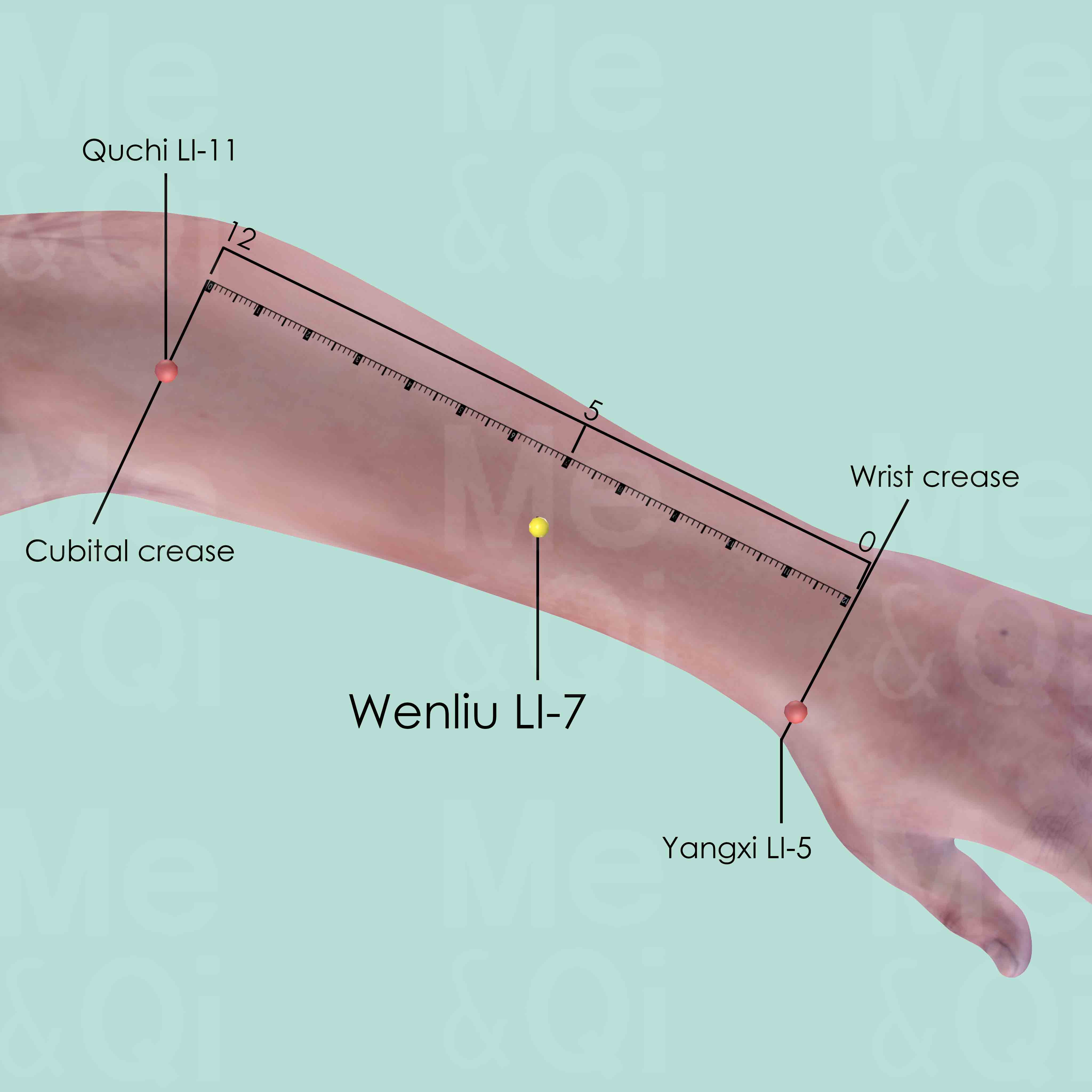
Wenliu LI-7
When a fist is made, with the ulnar side downward and elbow flexed, the point is 5 cun above Yangxi LI-5 at the wrist crease, 1 cun distal to the midpoint of the line joining Yangxi LI-5 and Quchi LI-11.
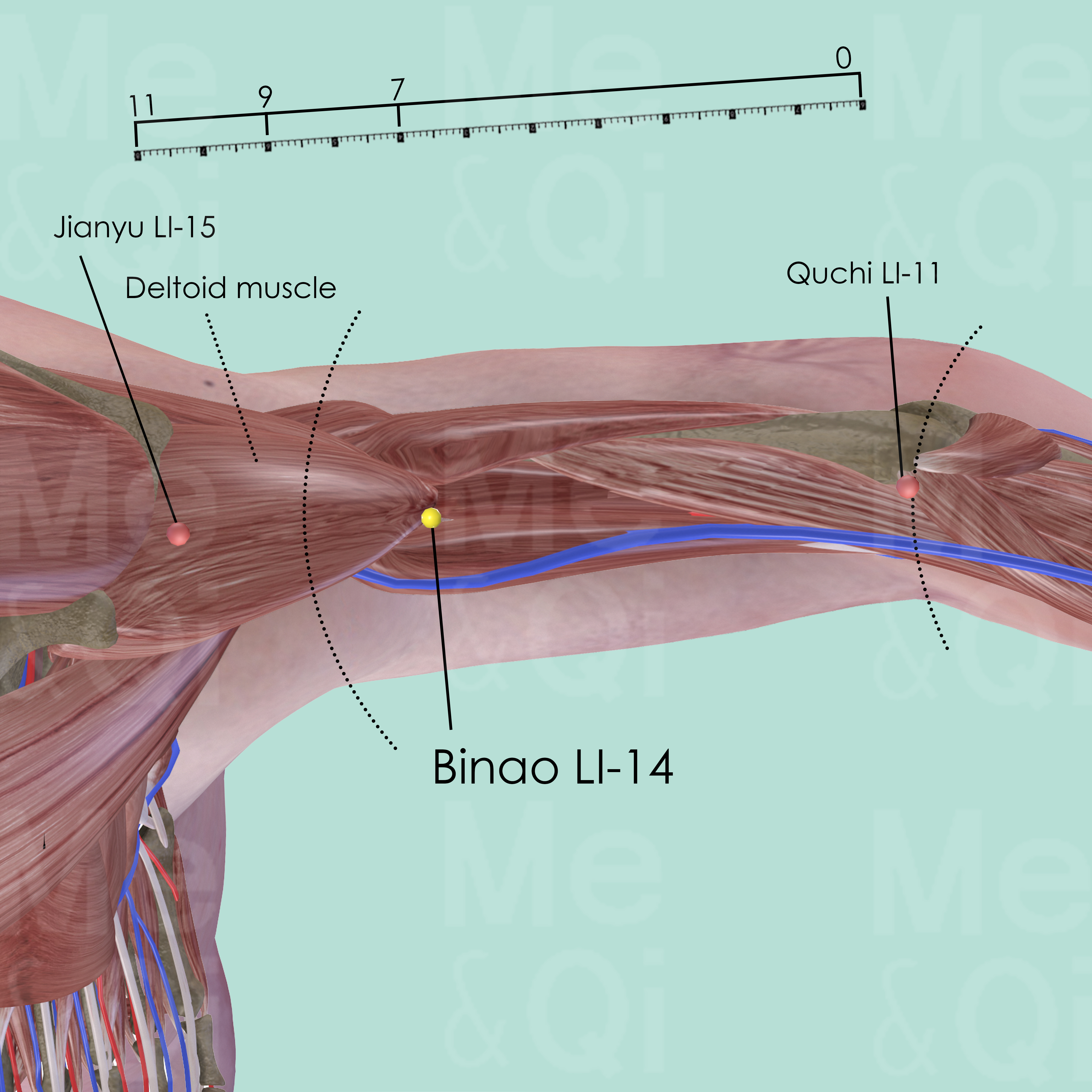
Binao LI-14
On the radial side of the humerus, superior to the lower end of deltoid muscle, on the line connecting Quchi LI-11 and Jianyu LI-15, 7 cun proximal to Quchi LI-11.
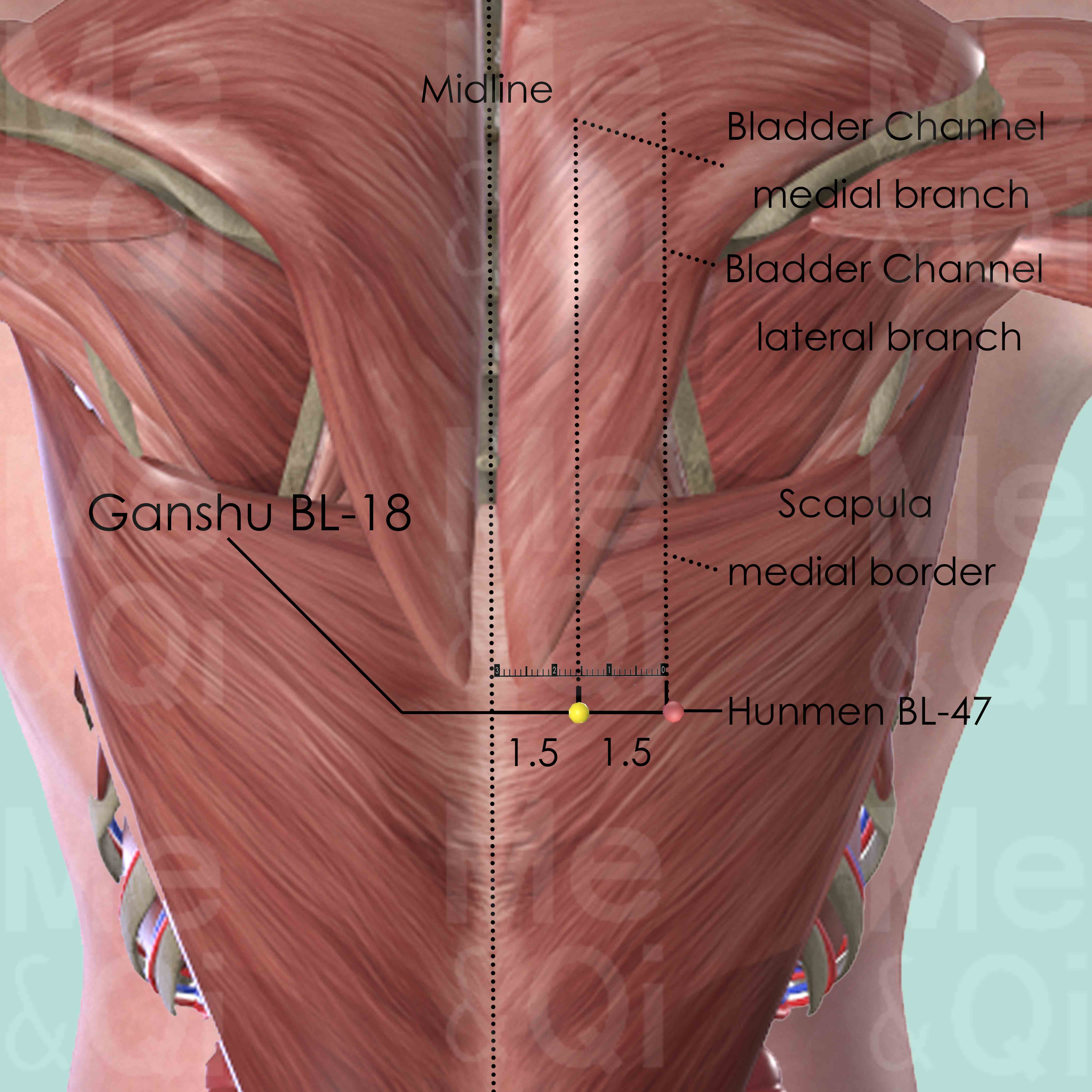
Ganshu BL-18
1.5 cun lateral to the lower border of the spinous process of the 9th thoracic vertebra (T9).
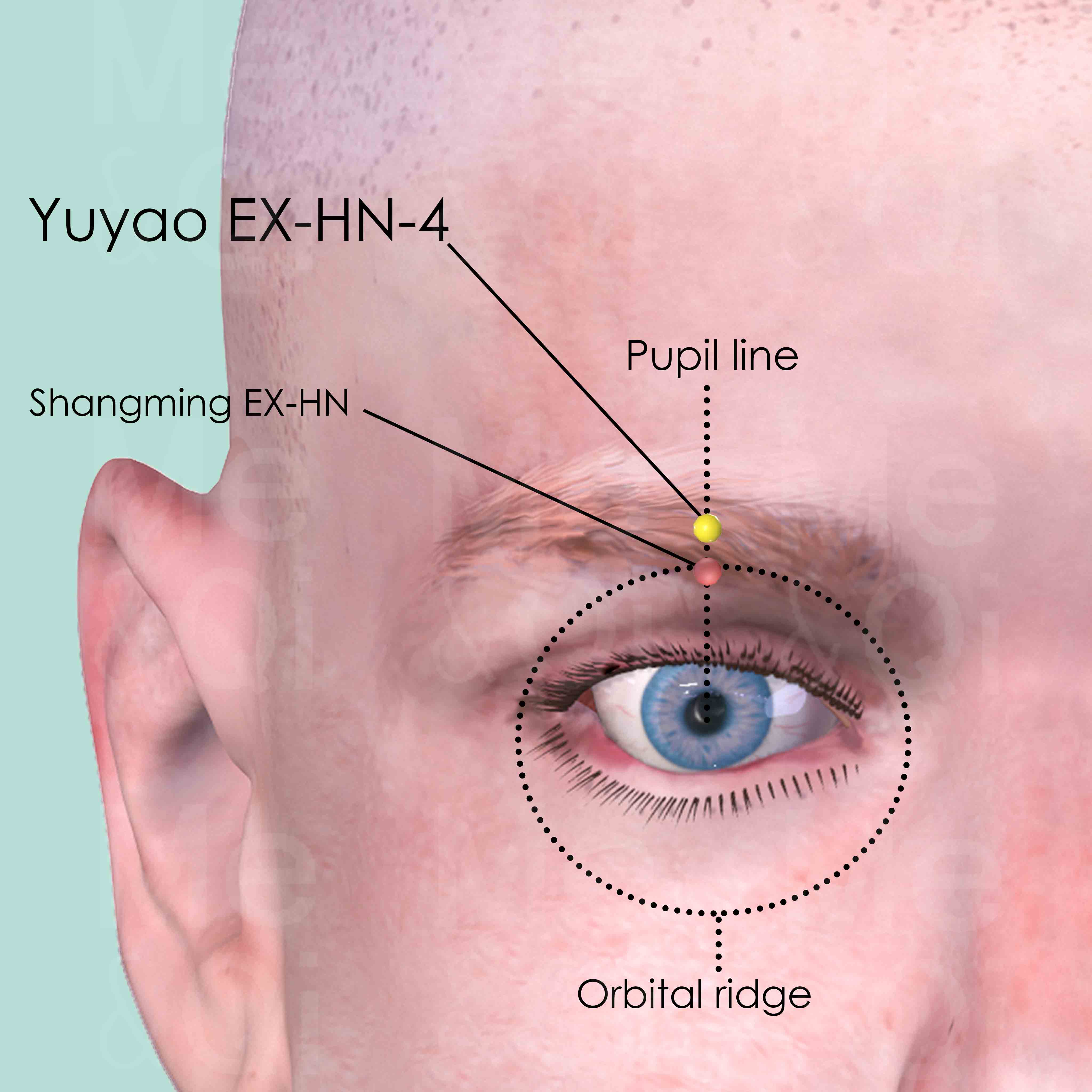
Yuyao EX-HN-4
When the patient looks straight forward, Yuyao EX-HN-4 is located directly above the pupil, in the midline of the eyebrow.
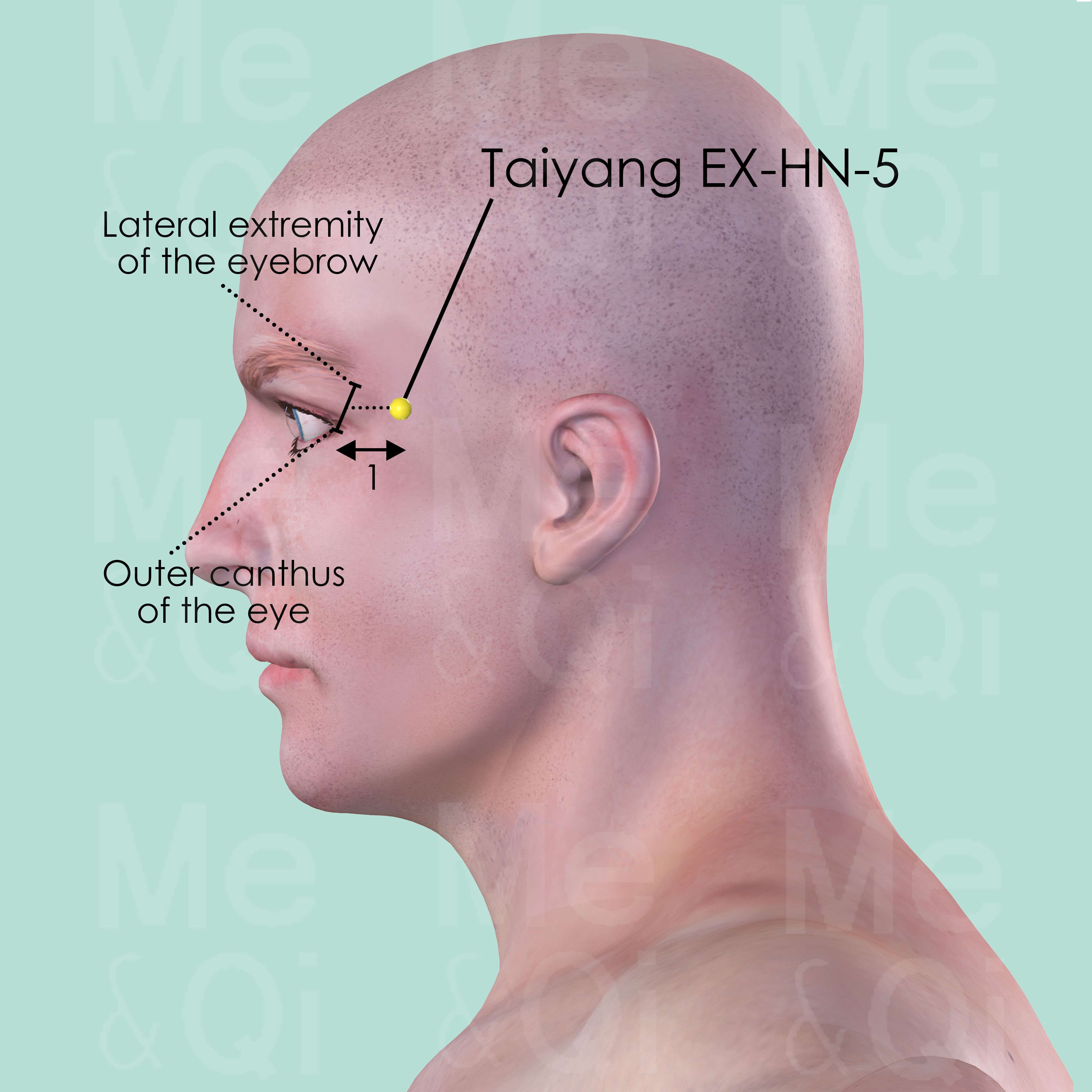
Taiyang EX-HN-5
At the temple, in the tender depression approximately 1 cun posterior to the midpoint between the lateral extremity of the eyebrow and the outer canthus of the eye.
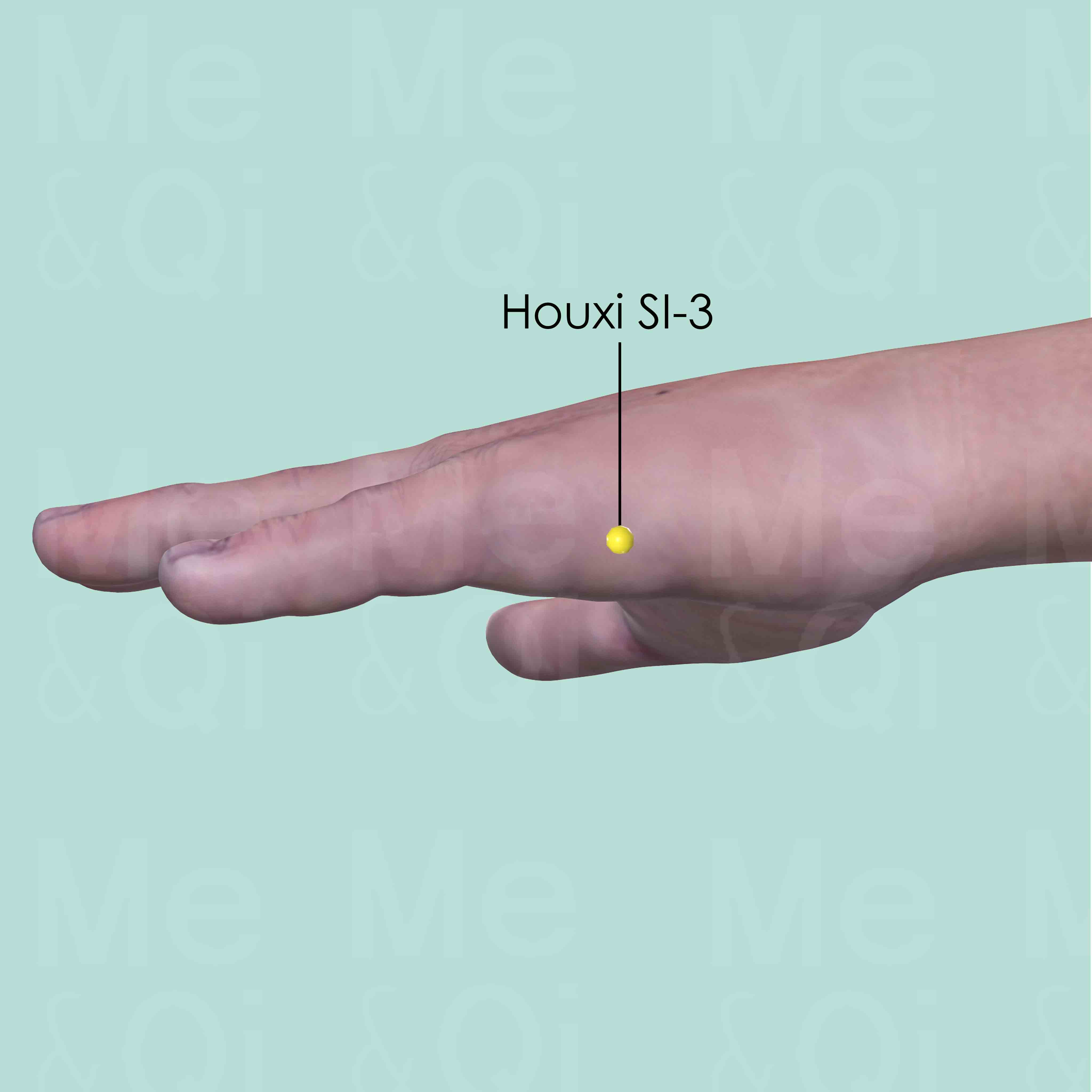
Houxi SI-3
Proximal to the head of the 5th metacarpal bone on the ulnar side, in the depression at the junction of the red and white skin.
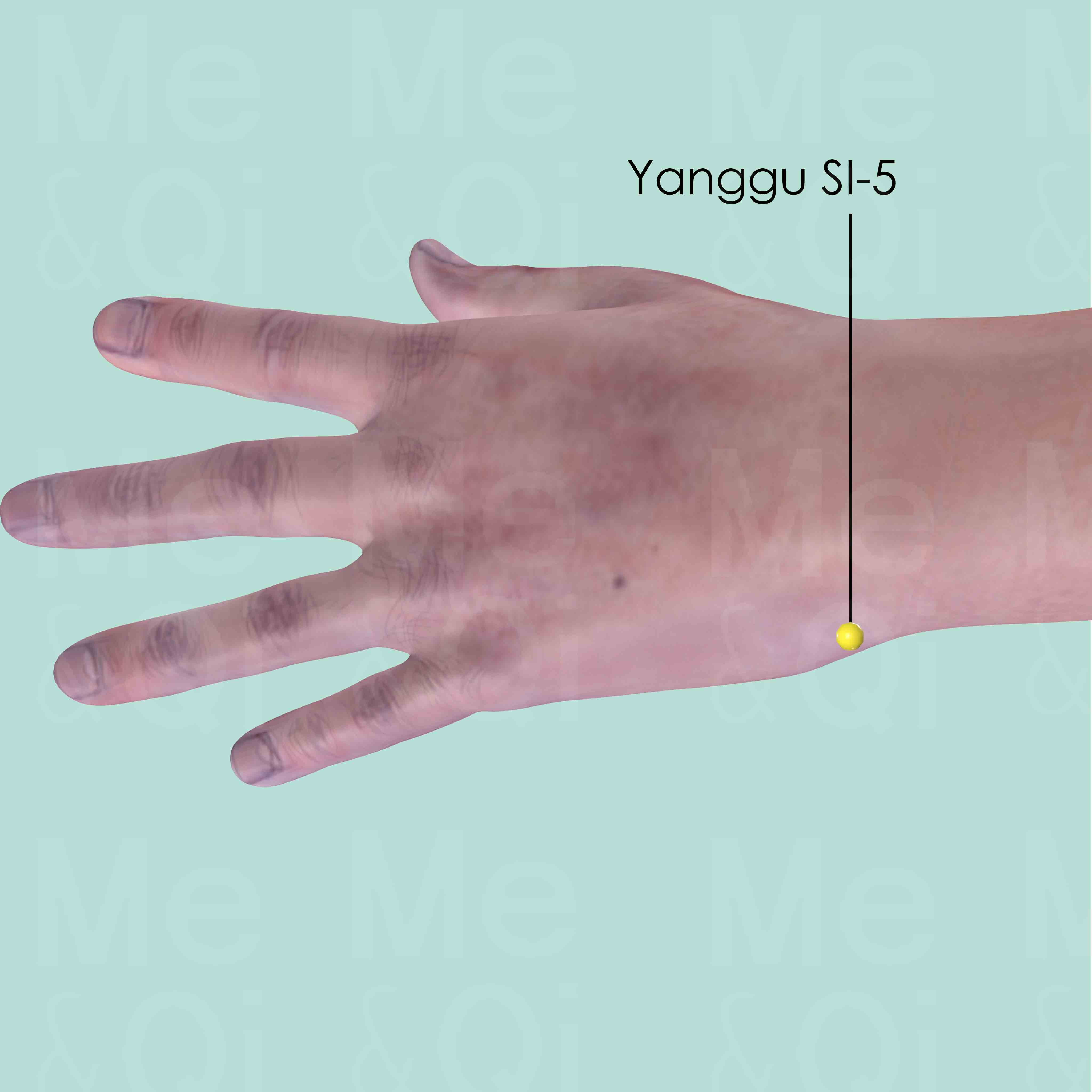
Yanggu SI-5
On the ulnar side of the wrist, in the depression between the styloid process of the ulna and the triquetral bone.
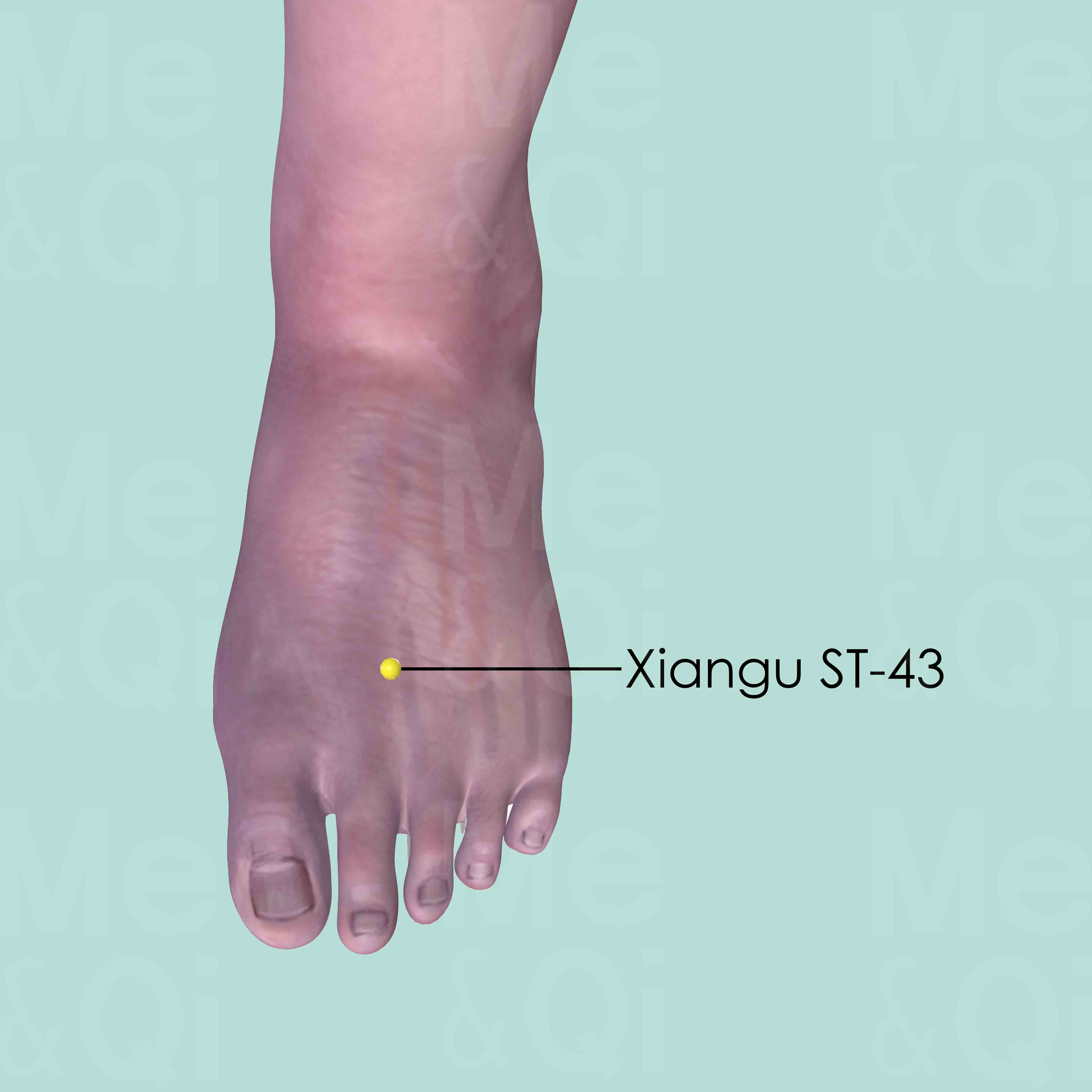
Xiangu ST-43
On the dorsum of the foot, in the depression between the 2nd and 3rd metatarsal bones, at the level of the junction of the shafts and the heads of these metatarsal bones.
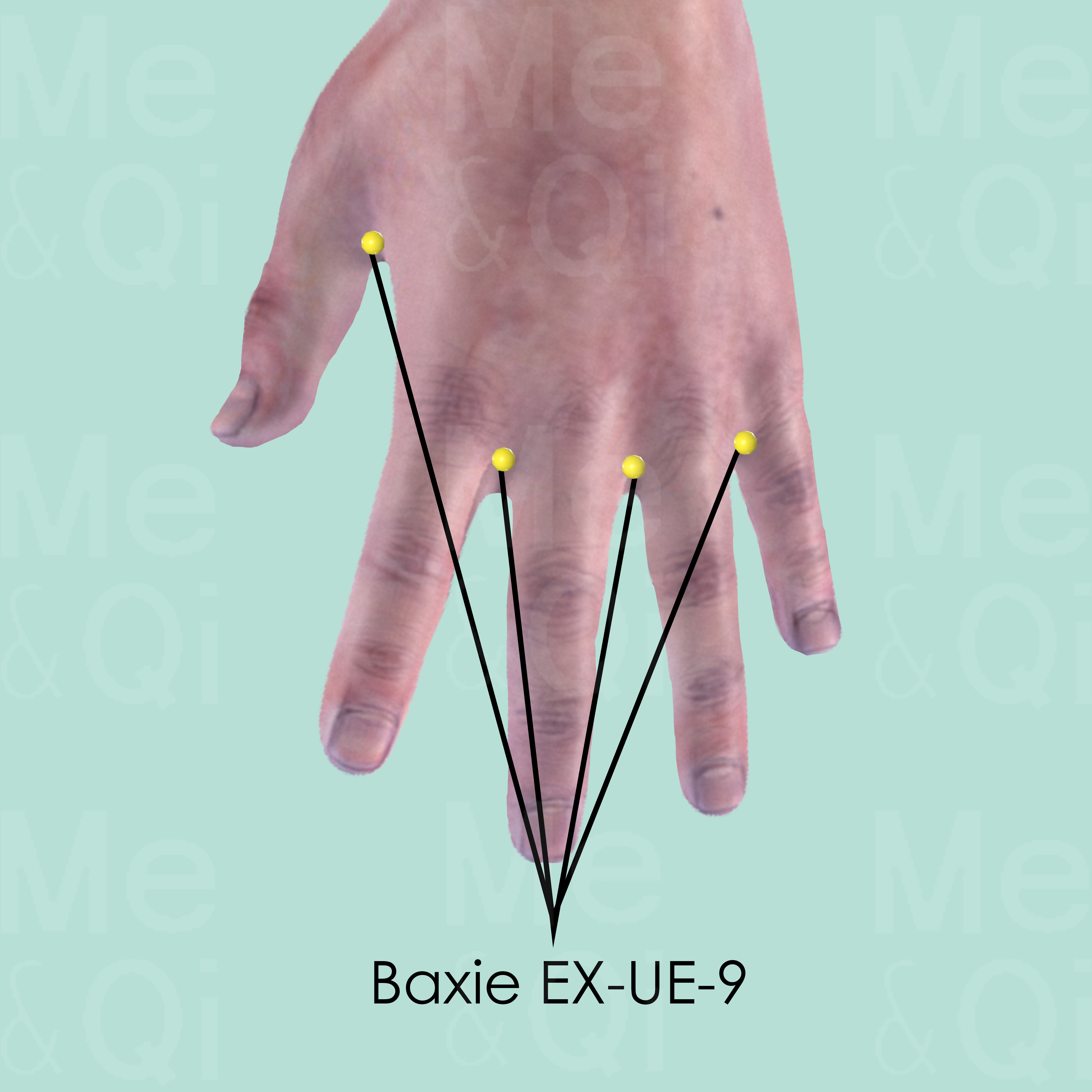
Baxie EX-UE-9
This is a group of 8 points in both hand, 4 points per each hand. Slightly proximal to the margins of the webs between the fingers, on the border of the red and white skin.
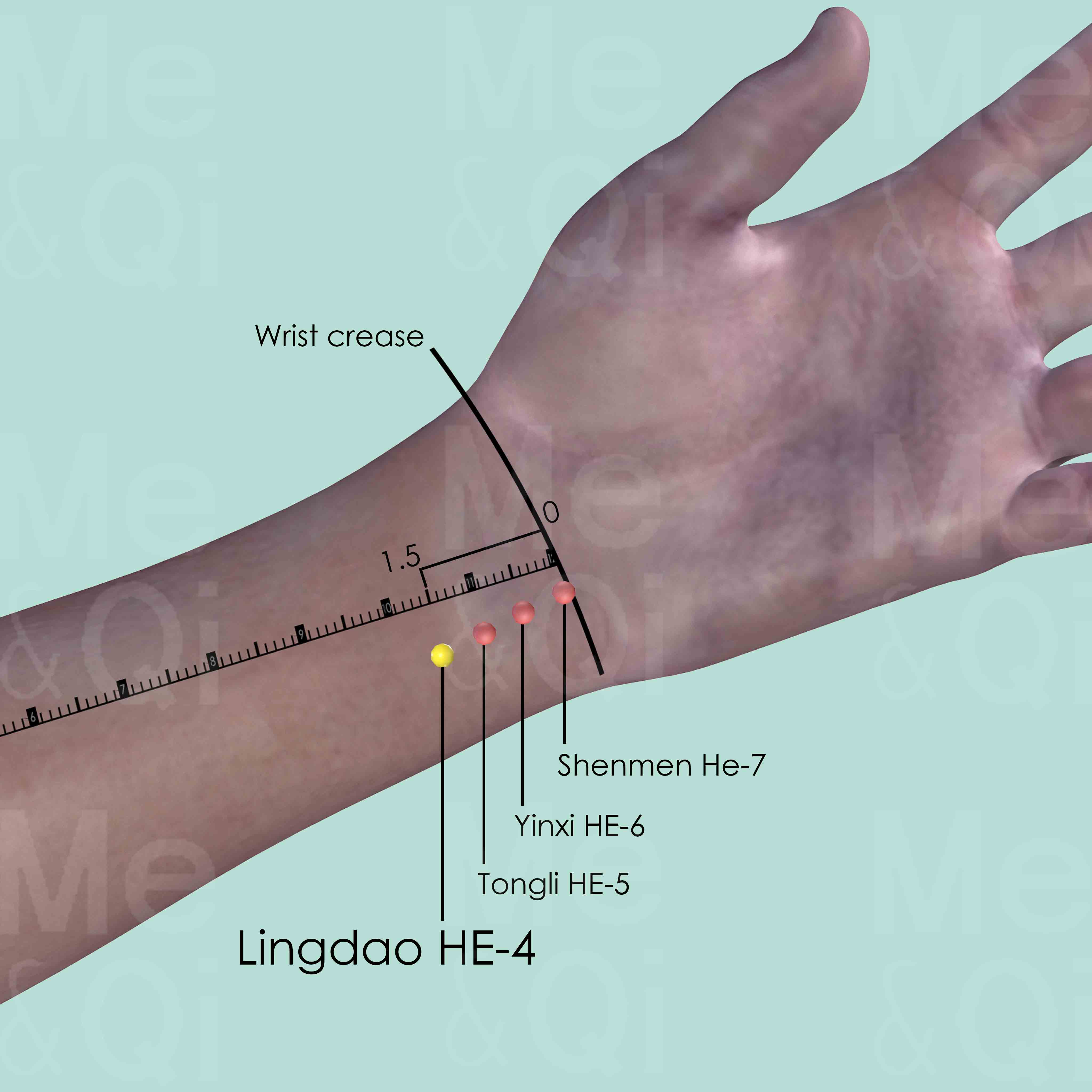
Lingdao HE-4
On the radial side of the tendon of flexor carpi ulnaris, 1.5 cun above the transverse crease of the wrist when the palm faces upward.

